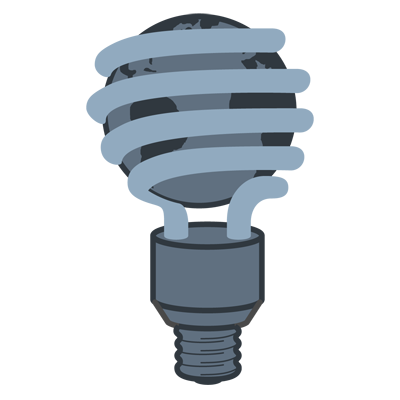Materials:
- 22-gauge solid (non-stranded) copper wire
- 6 mm-diameter hollow glass tubing
- 5-minute epoxy
- Non-sagging hard-cure epoxy (e.g. loctite 9460)
- Needlenose pliers
- Wire strippers
- Wire cutters
- Gallium-Indium (GaIn) eutectic mixture
- Silver Paint and Silver Paint Thinner
- Wooden applicators
- Diamond scribe
- Small, thin pieces of the semiconductor of interest
- Plastic tweezers that can handle the pieces of semiconductor
It is usually more efficient and more practical to make several to a dozen electrodes at once, due to the necessity of a propane-oxygen flame and various epoxies. Therefore, several steps refer to “sections” of glass and copper wire while others are more detailed instructions for each “section.” Each “section” of glass plus wire becomes an electrode.
- Cut 7-inch sections of 6mm glass tubing using a diamond scribe.
- With the aid of a safety buddy, fire-polish both ends of each section of glass using a propane-oxygen flame. For each piece, leave one end in the fire a little longer to partially narrow the opening. Do not fully close the end of the tube.
- Cut 12-inch sections of 22-gauge solid (non-stranded) copper wire. Strip ~1 inch from each end.
- On ONE end of each section of stripped wire, use the needlenose pliers to carefully curl the wire in on itself. You are going to create a tight spiral as a base for the semiconductor sample, so it is essential to curl the wire as tightly as possible.
- Continue curling the wire in on itself using the needlenose pliers, until you have a circular area of curled wire approximately a quarter inch across. Smaller areas are acceptable, but can only be used with smaller semiconductor samples. Bend the wire carefully so that the circular cross-section is perpendicular to the length of the glass tubing.
- Insert the untouched end of the wire into the narrowed side of the glass tubing. Carefully slide the wire through the tubing until the insulation ends at the beginning of the glass, leaving only the exposed coiled wire on the narrowed end of the glass. Several inches of wire should hang out the other side of the glass tubing. You will attach potentiostat clips to that end in your experiments.
- Wear nitrile gloves for this step. Use a bit of 5-minute epoxy on the narrowed end of the glass tubing to bind the coiled wire. Try to avoid getting epoxy on the outside of the glass – let it instead slip down a bit into the hollow inner part. You don\’t want 5-minute epoxy to be exposed to the electrolyte solution, so remove excess epoxy with a wipe (if still liquid) or a razor blade (if solidifed). If some remains, you will cover it with 48-hour epoxy in step #10. Let the 5-minute epoxy dry. The combination of wire and glass will be referred to as an electrode from now on.
- For this step, you will use GaIn eutectic alloy mixture – be sure to wear nitrile gloves for this step and to change gloves immediately after done using Ga-In. Prop up the electrode vertically so that the coiled end is up, accessible, steady, and parallel†to the ground. Apply enough of the eutectic Ga-In mixture to form a thin continuous bubble layer on top of the coiled wire. Using the tweezers, carefully lay a piece of your semiconductor sample on top of the bubble and carefully pat the edges of the sample down (avoid touching the top of the sample, because it will contaminate the surface and affect your experimental results). Consider your gloves and the tweezers to be contaminated with eutectic GaIn and your semiconductor, and label the tweezers accordingly.
- For this step, you will use silver paint and silver paint thinner – be sure to wear nitrile gloves for this step and to change gloves immediately after done using silver paint. Flip the electrode over carefully so that you can access the back of the coiled wire without losing your sample or the GaIn. Open the silver paint and mix it well using a wooden applicator. If the mixture is still immiscible, thick, or appears dry, add a few drops of the silver paint thinner. Avoid adding too much paint thinner, as this will make the paint harder to apply and will increase the drying time of the paint. Once the paint seems homogenous, use the brush on the cap to apply the paint to the back of the coiled wire. Spread the paint over the whole coil and up the sides to touch the exposed parts of the semiconductor sample. The silver paint, once dry, will steady the sample for coating with 48-hour epoxy. Return the electrode to its previous vertical position, with the semiconductor sample parallel to the ground and facing up. Let the paint dry. Discard the wooden applicator and your gloves.
- Wear nitrile gloves for this step. Using a wooden applicator, mix and apply the 48-hour epoxy to the entire tip of the electrode without covering the semiconductor sample that is immediately above and touching the GaIn. Cover all exposed 5-minute epoxy, eutectic GaIn, silver paint, copper wire, and the narrowed opening of the glass tubing, to avoid contaminating the electrolyte solution. The 48-hour epoxy will not break down in the organic solvent of the electrolyte solution, while the others will/might. When finished, you should be able to only see semiconductor that is touching the GaIn underneath it (you probably can see the GaIn *through* the semiconductor if the sample is thin and transparent). Let the epoxy dry for 48 hours. The electrode is now ready for your experiments.

 Research
Research
 Energy
Energy
 People
People